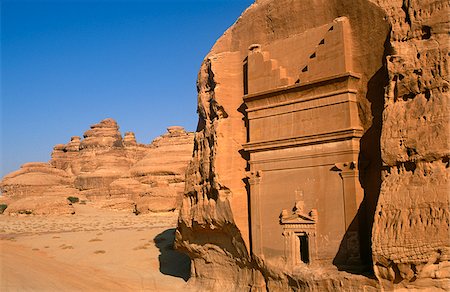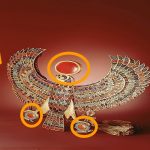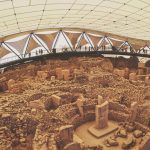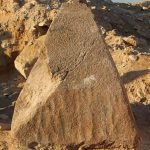Madain Salih Unveiled: Arabia’s Hidden Jewel

Nestled in the Medina region of Arabia lies the ancient city of Madain Salih, a historical marvel that flourished between 1 – 74 AD. Named after the Prophet Salih, this archaeological site not only bears witness to the ancient Nabatean civilization but also reveals intriguing traces of Roman and Lihyanite influences, reflecting its rich cultural tapestry.
Madain Salih, also known as Al-Hijr, stands as testament to the region’s historical significance, yet its existence remained shrouded from the world for a considerable period under Saudi Arabia’s custodianship. This concealment, intended to safeguard its preservation and cultural heritage, inadvertently heightened global curiosity about its mysteries and treasures.

The city’s origins trace back to the Nabateans, renowned for their advanced architectural skills and mastery of trade routes in ancient Arabia. Carved into the sandstone cliffs, the monumental tombs and intricately designed facades of Madain Salih echo the prosperity and cultural sophistication of this once-thriving civilization. The site’s inclusion on UNESCO’s World Heritage List in 2008 further underscored its importance and contributed to its gradual emergence onto the international stage.

Beyond its Nabatean legacy, Madain Salih bears evidence of Roman influence, evident in the architectural styles and artifacts discovered within its confines. Additionally, remnants of the Lihyanite civilization, predating the Nabateans, provide insights into the city’s earlier history and its role as a cultural crossroads in ancient Arabia.
Madain Salih’s strategic location along ancient trade routes facilitated its cultural exchange and prosperity, making it a pivotal hub in the Arabian Peninsula. The preservation efforts undertaken by Saudi Arabia, coupled with recent initiatives to promote tourism and scholarly research, have begun to unveil the city’s secrets to the world.

Today, visitors to Madain Salih can wander among its imposing tombs, marvel at its rock-cut architecture, and contemplate the interconnectedness of civilizations across millennia. The site not only offers a glimpse into Arabia’s ancient past but also serves as a reminder of the enduring legacy of those who once thrived amidst its sandstone cliffs.
As Madain Salih continues to reveal its treasures and narratives to archaeologists and visitors alike, it stands as a beacon of cultural heritage and a testament to the resilience of history in the face of time. Its journey from obscurity to recognition underscores the importance of preserving and celebrating the diverse histories that shape our understanding of the past and enrich our global heritage.










